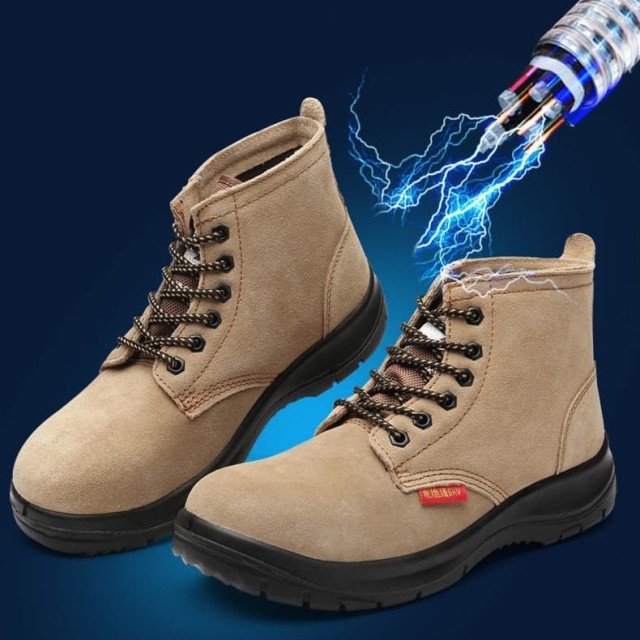The steel-toe boots protecting millions of workers worldwide weren’t invented in a laboratory—they were forged in coal mines, construction sites, and factories where crushed feet and chemical burns were once routine. This article traces how historical workplace dangers and material science breakthroughs created modern safety footwear, revealing why today’s OSHA standards still reflect lessons written in blood.
The Industrial Crucible: Emergence of Workplace Hazards
Mining's Role in Early Safety Demands
Before safety regulations, miners faced collapsing tunnels, falling rocks, and acidic groundwater with only leather boots—if any protection at all. Research shows that underground work accounted for over half of recorded foot injuries in the early 1900s, prompting the first crude safeguards:
- Wooden sabots: Hollowed-out clogs prevented direct contact with toxic mine waste
- Iron-reinforced soles: Blacksmiths added metal plates to boots to resist puncture wounds from scattered tools
These improvisations laid the groundwork for systematic protection, proving that employer liability could drive innovation.
Construction Boom and Injury Catalysts
The skyscraper era (1880s–1920s) turned steel girders and rivets into airborne hazards. Historical records indicate:
- Falling objects: Unsecured materials caused over 30% of disabling foot injuries
- Molten tar burns: Road crews needed heat-resistant soles decades before modern synthetics
This era saw the first commercial safety shoes with layered leather and primitive toe guards—though workers often resisted wearing them due to discomfort.
Engineering Protection: Milestones in Footwear Technology
From Reinforced Leather to Steel Toe Caps
World War II accelerated material innovation, with military needs birthing technologies later adapted for civilians:
- 1940s steel toes: Developed for shipyard workers handling dropped artillery shells
- 1950s electrical insulation: Rubber compounds protected power line technicians after fatal electrocutions
Early designs prioritized protection over comfort, causing low adoption until ergonomic improvements in the 1960s.
Post-WWII Material Science Breakthroughs
The space race yielded lightweight, high-strength materials that transformed safety footwear:
- Fiberglass composites: Replaced bulky steel in chemical plants where metal corroded
- Slip-resistant treads: Patterned soles reduced falls in oil refineries by approximately 40%
These advancements allowed protection to coexist with mobility—a balance critical for modern OSHA compliance.
Legacy and Modern Relevance
OSHA/ANSI Standards as Historical Continuations
Today’s regulations directly address hazards identified centuries ago:
| Historical Hazard | Modern Standard |
|---|---|
| Crushed toes | ASTM F2413 toe compression resistance |
| Chemical exposure | ASTM F2412 liquid penetration tests |
| Electrical risks | EH-rated insulation for 18,000 volts |
These standards institutionalize hard-won knowledge, ensuring new materials meet proven safety benchmarks.
Case Study: Impact on Injury Rates in Heavy Industries
Post-regulation data reveals:
- Steel manufacturing: Puncture-related injuries dropped by roughly 60% after mandatory safety footwear
- Warehousing: Slip-and-fall claims decreased where slip-resistant soles were enforced
Yet the greatest challenge remains convincing workers to wear protection—a struggle dating back to the first uncomfortable wooden sabots.
Engineered for Legacy, Built for Tomorrow
At 3515, we honor this heritage by crafting safety footwear that meets historical demands while addressing modern needs—from composite toes for airport security to anti-static soles for clean rooms. Distributors and bulk buyers trust our designs to protect workforces where it matters most. [Contact our team] to explore OSHA-compliant solutions tailored to your industry’s unique hazards.
Products You Might Be Looking For:
Discover customizable safety footwear for industrial protection
Explore versatile steel toe work boots for workplace safety
Related Products
- Wholesale Customizable Suede Safety Boots - Puncture-Proof with Velcro Closure
- Wholesale Durable Camo Canvas Shoes with High-Traction Rubber Soles
- Puncture-Resistant Velcro Safety Boots for Wholesale & Custom Manufacturing
- Customizable Anti-Smash Safety Boots for Wholesale & Private Label Manufacturing
- Durable Mid-Cut Tactical Boots for Wholesale & Private Label
Related Articles
- How to Choose Work Boots That Match Your Job's Safety Demands
- Steel Toe Work Boots: Balancing Safety and Comfort for Demanding Jobs
- How to Choose Work Boots That Match Your Job Demands and Safety Needs
- How to Choose Work Boots That Match Your Industry's Safety Needs
- Matching Men’s Work Shoe Safety Technologies to Workplace Hazards



















